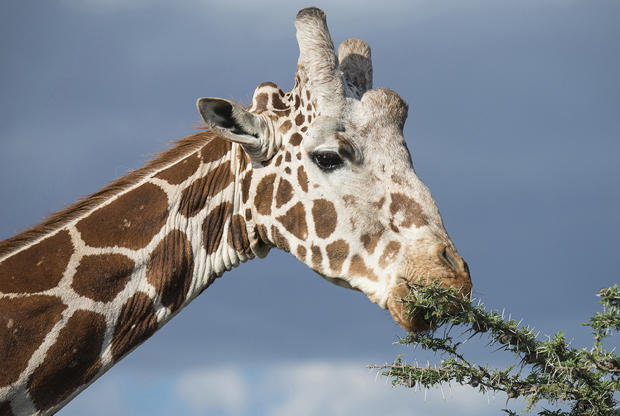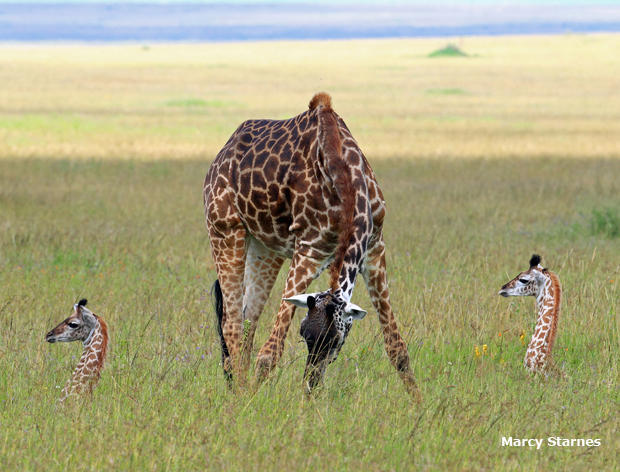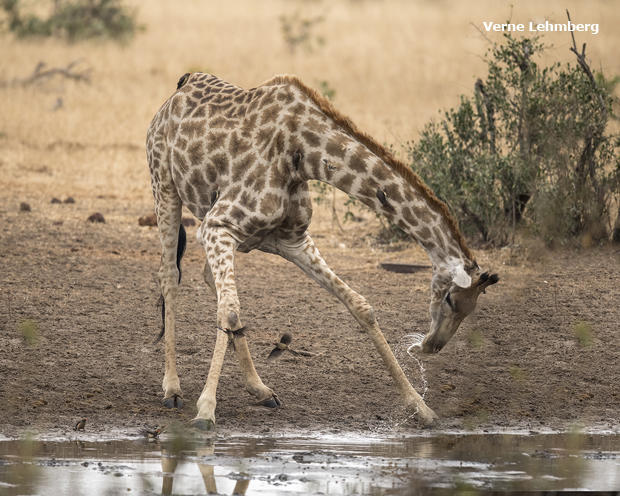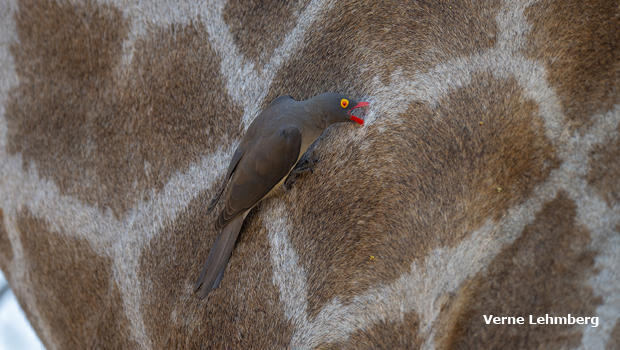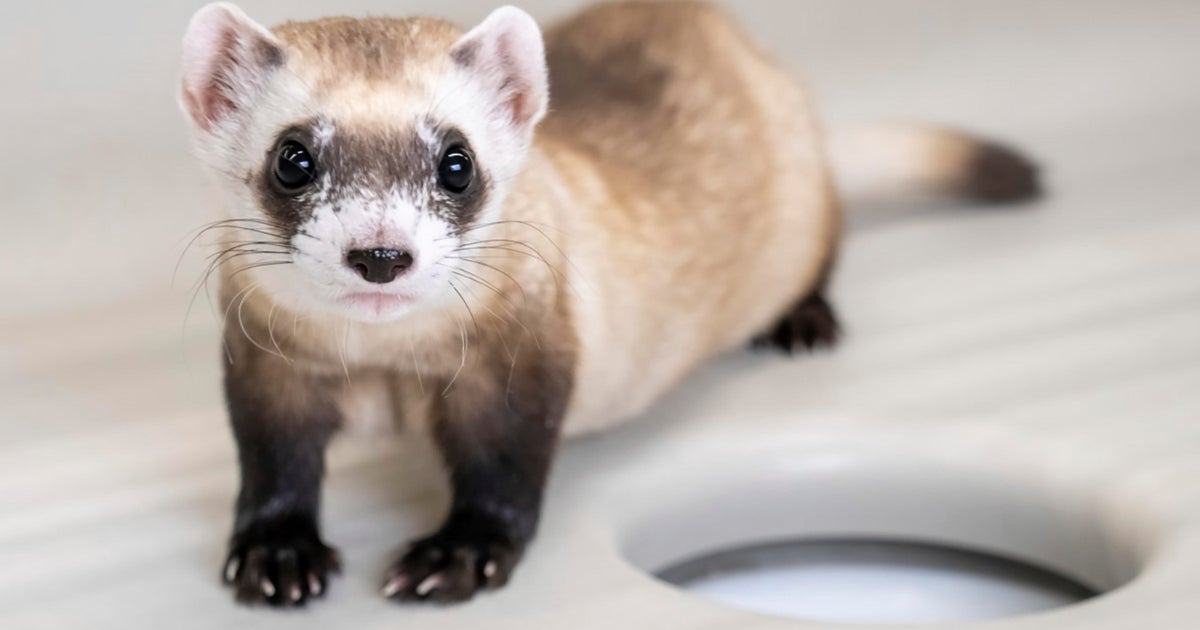Nature up close: Giraffes, a most improbable animal
By "Sunday Morning" contributing videographer Judy Lehmberg.
I come from a pretty small family, so when my father married a South African woman with a large extended family, I was delighted. They are an interesting bunch: Russian Jews, some of whom survived the German concentration camps during World War II, and some like my step-mother's father, who fought in that war and lived to be 98 years old. Not long after I first met him, he asked me about the animals in Yellowstone National Park which they had visited on one of their trips to the U.S. He knew I was a biologist, so he asked where all the large animals were in the park.
I had to think a minute. Didn't he see the bison, elk, moose, pronghorn antelope, mule deer, two species of bears and the wolves? Yes, he said he say them, but where were the rest of them?
Then it hit me. Those are the only large animals in Yellowstone, and he was comparing them to his experiences in Kruger National Park and other African parks and reserves.
He was right. The continental U.S. has a measly 490 species of mammals, while Africa has 4,700. Granted the continent of Africa is huge by comparison, but that is almost ten times the number of mammal species than are in the U.S.
Africa has 90 species of antelope; the U.S. has zero. (Contrary to their name, American pronghorn are not true antelope.) We fair better in the bird department with a little more than 2,000 species in all of North America, which is similar to the total number in all of Africa. But Kenya alone has over 1,100 species, and Africa has the Sahara Desert where very few birds live full time. And then there are the strange-looking animals like elephants, rhinos, hippos and giraffes – animals that are pretty difficult to explain strictly from an evolutionary standpoint. They all look like they were made by committees that couldn't agree on anything.
The giraffes are the most graceful of the "committee" species. They move almost as if they are trying to hold an invisible stack of books on their head. They aren't all that graceful-looking when they lean down to get a drink of water, but even just standing still and eating Acacia leaves, they seem to emit a graceful, peaceful air. How they eat those leaves is hard to understand when you notice the plant's three-inch-long thorns, but they don't seem to bother the giraffes a bit. They must have really tough tongues.
Their general anatomy is a study in superlatives. They are the tallest terrestrial animals on Earth. Even though they only have seven neck, or cervical, vertebra (the same as humans), their neck is six feet long and weighs 600 pounds. Their legs are six feet long, and their feet are 12 inches across, which along with strong leg bones helps them support their immense weight (in males, that's up to 3,000 pounds). Their heart is about two feet long and weighs around 25 pounds, and their lungs can hold up to 12 gallons of air.
Although males can be aggressive towards each other (more on that in a minute), they don't defend a territory or even live in consistent family groups. Sometimes a group of giraffes is all females and their young, sometimes they are all male, and sometimes the group is a mix of ages and both sexes. They are more fluid than many species, as group members tend to come and go from one group to another. No one seems to know what triggers them to move, or to return.
No one really knows why a giraffe's neck is so long. Before Charles Darwin proposed his theory of organisms inheriting characteristics (what we now know as genes) from their parents, some people thought animals acquired characteristics during their lifetimes and then passed those characteristics to their offspring. For several thousand years, that theory was believed by everyone from Hippocrates and Aristotle to, most famously, Jean-Baptiste Lamarck, and became known as "Lamarckian evolution." Lamarck used giraffes as an example. He believed they stretched their necks to reach higher leaves, and passed those stretched necks to their offspring. He was wrong. For many years biology teachers have taught that giraffes who happened to be born with slightly-longer necks could reach higher leaves, thereby outcompeting their shorter-necked friends and relatives and successfully pass those genes on to the next generation.
That may very well be true, as the fossil record shows giraffe necks have elongated, especially in the last seven million years. But it is virtually impossible to say why their necks got longer. Maybe it was because longer-necked individuals could reach higher leaves. But there could be at least one other explanation.
Male giraffes sometimes fight to win the right to mate with a female. They all fight the same way, by swinging their necks and hitting the other giraffe, usually trying to knock it off balance, causing it to fall, which can result in their death. They can also do a good bit of damage with their horns if a blow lands hard enough. I've never seen them fight to the death, but I have seen fights that lasted several minutes and didn't always have an obvious winner. Maybe males with longer, thicker necks are more successful at mating, and therefore pass those genes on to their offspring?
My favorite thing about giraffes is that they attract oxpeckers, birds that land on giraffes and other herbivorous animals in Africa, and pick parasites off them. I have no idea why, but oxpeckers seem particularly attracted to giraffes. I love to watch them run their beaks systematically through a giraffe's fur like a single-tinged comb, feeling for ticks and other parasites. Sometimes the giraffe will twitch its skin and the oxpeckers fly off, but sometimes they will hold their ears really still so an oxpecker can go in and grab whatever parasites are in there.
Judy Lehmberg is a former college biology teacher who now shoots nature videos.
See also:
- Judy Lehmberg (Official site)
- Judy Lehmberg's YouTube Channel
To watch extended "Sunday Morning" Nature videos click here!
